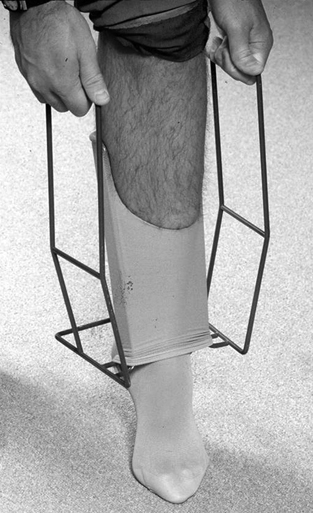One advantage of elastic stockings for treating CVI and/or venous ulceration is that their effects are operator independent. As long as the patient wears the stockings, the effects are dependent on the strength of the stocking and independent of the patient. Compression stockings are less bulky than compression bandages and potentially more comfortable. They may be worn with normal footwear and allow daily inspection of ulcers as well as wound care. Because they can be difficult to apply, adjunctive devices are often useful (Figure 1).
Nonoperative Management of Chronic Venous Insufficiency
Compression Therapy
Elastic Stockings
![]()
Stay updated, free articles. Join our Telegram channel

Full access? Get Clinical Tree


Thoracic Key
Fastest Thoracic Insight Engine

